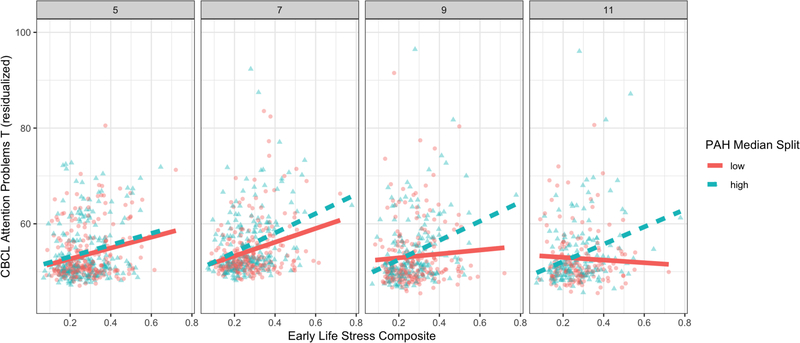Figure 2: Early life stress × prenatal PAH × assessment wave interaction predicting CBCL Attention Problems across development.
Associations between early life stress composite scores and Child Behavioral Checklist (CBCL) Attention Problems T-scores are presented here grouped by a median split of log total PAH scores (median=2.28) at the 3–5, 7, 9, and 11 year visits (facet panels from left to right). Participants with low PAH exposure are denoted by red circles and solid fit line while those with high PAH exposure are denoted by blue triangles with dashed fit line. Greater early life stress scores associated with greater CBCL Attention Problems T-scores across all waves of assessment and this positive association was maintained over time strongest among children with greater prenatal PAH exposure. All interaction models were tested with continuous values of PAH and the median split is only used for display purposes here. Values represent residualized CBCL scores covarying for all nuisance variables in the main analysis models: sex, gestational age, ethnicity, presence of a smoker in the home, maternal IQ, maternal years of education, quality of the proximal caretaking environment at age 3, and change of residence by age 5. Note: some mothers completed the CBCL 18–24 months prior to the 5-year ELS interview.

